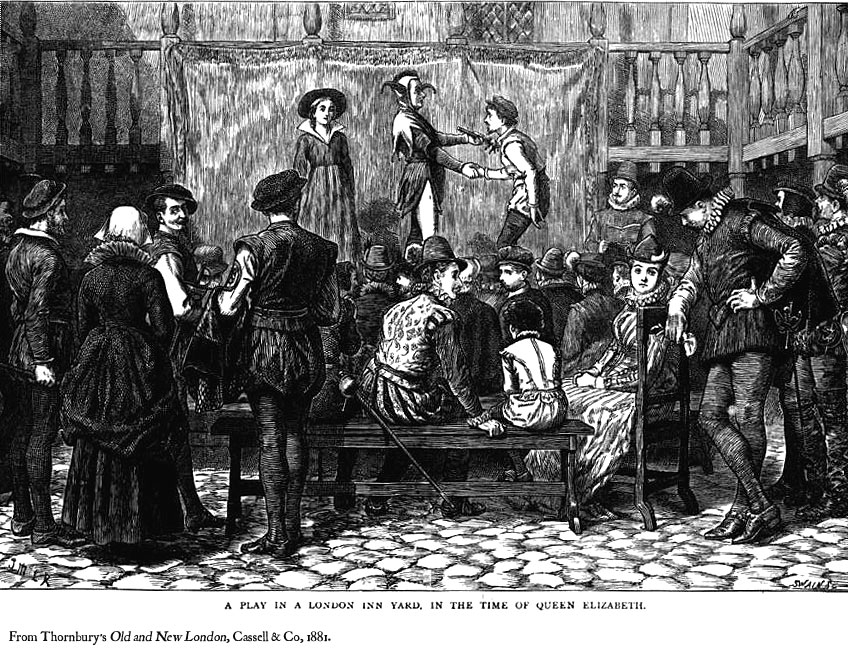Hello readers!
I'm Jagruti Vala and I'm a student .
In this blog, I want to share movie screening of Macbeth tragedy by William Shakespeare.
HISTORICAL BACKGROUND:-
The tragedy, Macbeth is loosely based on the real life story of Macbeth of Scotland.
Shakespeare wrote it during the Jacobean Era which begins with the reign of King James.
This reign of King James united England and Scotland, and the character of Banquo represented King James and his family line.
LIST OF CHARACTERS OF MACBETH:-
•Macbeth, one of William Shakespeare's most renowned tragedies, features a variety of intriguing and complex characters. Here are the key characters in Macbeth:
1.MACBETH :-
The tragic protagonist of the play, Macbeth is initially a valiant soldier but transforms into a morally corrupted and ambitious tyrant. He is driven to commit regicide and becomes consumed by guilt and paranoia.
2.LADY MACBETH:-
Macbeth's ambitious and manipulative wife, Lady Macbeth plays a crucial role in urging her husband to seize power.
However, her guilt and remorse from the bloodshed ultimately lead to her mental deterioration.
3.DUNCUN:-
The King of Scotland, Duncan is a benevolent and virtuous ruler. He is unsuspectingly murdered by Macbeth, which sets off a series of tragic events.
4.BANQUO:-
Macbeth's loyal friend and fellow general, Banquo is prophesied to father a line of kings.
Macbeth sees Banquo as a threat to his reign and orders his assassination.
5.MACDUFF:-
A nobleman loyal to Duncan, Macduff becomes suspicious of Macbeth's rise to power and eventually leads a rebellion against him.
He is driven by his desire for justice and vengeance.
6.THREW WITCHES:-
Often referred to as the "weird sisters," these supernatural beings serve as catalysts for Macbeth's downfall.
They prophesy Macbeth's rise to power, which fuels his ambition and ultimately leads to his tragic fate.
7.MALCOM:-
Duncan's eldest son, Malcolm flees to England to seek support and allies against Macbeth's tyranny.
He later returns to Scotland to claim the throne.
8.HECATE:-
The goddess of witchcraft, Hecate is angered by the Three Witches' involvement with Macbeth.
She plans to manipulate Macbeth into his own destruction.
These are just some of the central characters in Macbeth.
Shakespeare skillfully crafts a web of conflicting motives, desires, and moral dilemmas, making each character integral to the tragic narrative.
HERE SOME MCQ TYPE QUESTIONS ABOUT MACBETH TRAGEDY:
1. What is the genre of Shakespeare's play "Macbeth"?
a) Comedy
b) Tragedy
c) Romance
d) History
ANSWER:- Tragedy.
2. Which of the following best describes Macbeth's tragic flaw?
a) Ambition
b) Kindness
c) Honesty
d) Patience
ANSWER:- Ambition.
3. The witches' prophecies play a significant role in Macbeth's downfall. What is the primary theme associated with these prophecies?
a) Love
b) Power
c) Justice
d) Friendship
ANSWER:- power.
4. Lady Macbeth's sleepwalking scene is a turning point in the play. What emotion is she struggling with during this scene?
a) Joy
b) Fear
c) Guilt
d) Anger
ANSWER:- Guilt.
HERE SOME OPEN ENDED QUESTIONS ABOUT MACBETH TRAGEDY:
1. Describe the symbolic significance of the opening scenes in Act I & IV involving the three witches in the play "Macbeth."
ANSWER:-
In Act I :-
"Macbeth," the witches' opening scene symbolizes the theme of fate and the supernatural. Their presence sets the tone for the entire play, suggesting a world governed by forces beyond human control.
In Act IV:-
the witches' appearance reflects the chaos and moral decay that has engulfed the characters and Scotland due to Macbeth's actions. Their prophecies and eerie atmosphere emphasize the consequences of unchecked ambition and the corrupting influence of power.
2. How does Macbeth's ambition lead to his moral deterioration throughout the play? Provide examples from the play to support your answer.
ANSWER:-
Macbeth's ambition drives his moral deterioration as he becomes consumed by his desire for power and the throne. Initially, he is hesitant about the idea of murder, but his wife's encouragement and the witches' prophecies fuel his ambition. As he commits heinous acts, his conscience starts to deteriorate.
An example is when Macbeth murders King Duncan in Act I. Before the act, he is tormented by guilt and sees a dagger hallucination, symbolizing his inner conflict. Afterward, his guilt leads to paranoia, evident when he imagines seeing Banquo's ghost at the banquet in Act III. This shows how his ambition leads to a breakdown of his mental and emotional stability.
3. In what ways does the motif of ‘blood’ serve as a symbol in "Macbeth"? Explain its significance in relation to guilt and violence. (‘Blood’ is mentioned around 40 times in the play).
ANSWER:-
The motif of 'blood' in "Macbeth" serves as a powerful symbol representing both guilt and violence. It's mentioned numerous times throughout the play, and its significance evolves as the characters' actions unfold.
In the beginning, blood symbolizes the violence and brutality that Macbeth and Lady Macbeth are willing to commit to achieve their ambitions. After Macbeth murders Duncan, he hallucinates blood on his hands, illustrating his guilt and the irreversible nature of his actions. Lady Macbeth's famous line, "Out, damned spot! Out, I say!" in Act V, as she sleepwalks and tries to wash imaginary bloodstains from her hands, further emphasizes the connection between blood and guilt.
In summary, the motif of 'blood' in "Macbeth" is a multi-faceted symbol that represents both the violence of the characters' actions and the guilt that follows. Its frequent mention throughout the play reinforces the themes of guilt, violence, and the destructive consequences of ambition.
4. Discuss the impact of the supernatural elements, such as the witches and prophecies, on the plot and characters of "Macbeth."
ANSWER:-
The supernatural elements in "Macbeth," including the witches and have a profound impact on both the plot and the characters, driving much of the action and shaping their motivations.
The appearance of Banquo's ghost and the witches' second set of prophecies in Act IV further complicate Macbeth's perception of reality, making him susceptible to manipulation by the supernatural forces. The witches' prophecies give him a false sense of security, leading to his downfall as he believes he is invincible.
5. Compare and contrast the characters of Macbeth and Lady Macbeth. How do their personalities and motivations contribute to the unfolding of the tragedy?
ANSWER:-
Macbeth and Lady Macbeth are complex characters in "Macbeth," each contributing uniquely to the unfolding tragedy while displaying contrasting personalities and motivations.
Macbeth starts as a loyal and brave soldier, but his ambition for power, leads him to commit heinous acts. He is plagued by internal conflicts and guilt, struggling with the moral consequences of his actions. Macbeth's ambition is driven by his desire for greatness and his fear of being perceived as weak. His transformation from a valiant warrior and tyrannical ruler is central to the tragedy's progression.
Lady Macbeth's guilt manifests as sleepwalking and her obsession with the imaginary bloodstains on her hands.
Macbeth and Lady Macbeth's contrasting personalities and motivations intersect to create a tragic narrative. Their ambitions, guilt, and deteriorating mental states propel the story forward, highlighting the destructive consequences of unchecked ambition and the moral decay that can result from the pursuit of power.
Thank you for visiting....🙂🦋
Happy learning 🌷🍀
• Reference or work cited:-
Chatgpt

































